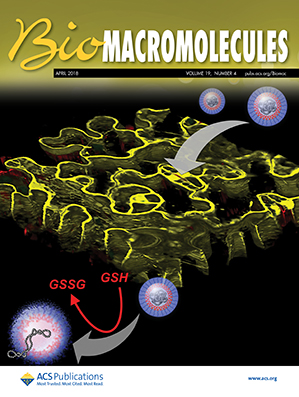Microfluidics Enabling the Controlled Manufacturing of Peptide and Protein Micro and Nano Biomaterials for Biomedical Applications
IF 5.4
2区 化学
Q1 BIOCHEMISTRY & MOLECULAR BIOLOGY
引用次数: 0
Abstract
The intersection of microfluidics (MFs) and biomaterials has opened new avenues for the precise fabrication of micro- and nanostructures with tailored properties. Peptides and proteins are among these biomaterials recently gaining significant attention, offering unique advantages due to their biocompatibility, biodegradability, assembly into biofunctional structures, and potential for targeted interactions. This Review provides a comprehensive overview of advancements in manufacturing of peptide- and protein-based micro- and nanomaterials (PPMNs) using MFs and identifies gaps in current knowledge. We discussed key aspects of MFs systems relevant to the fabrication of micro- and nanostructures, including microchip design and material, as well as manufacturing parameters. By understanding these factors, researchers can optimize MFs systems to precisely tune the size, shape, and composition of the fabricated PPMNs, and get insights into future research directions and address current limitations. Digital approaches and standardization of MFs will accelerate translation of PPMNs for different biomedical applications.
- Download: Download high-res image (169KB)
- Download: Download full-size image
用于生物医学应用的肽和蛋白质微纳米生物材料控制制造的微流体技术。
微流体和生物材料的交叉研究为精确制造具有定制性能的微纳米结构开辟了新的途径。肽和蛋白质是近年来备受关注的生物材料之一,由于其生物相容性、生物可降解性、组装成生物功能结构以及潜在的靶向相互作用,它们具有独特的优势。本综述全面概述了利用基质制造肽基和蛋白基微纳米材料(PPMNs)的进展,并指出了目前知识中的空白。我们讨论了与微纳米结构制造相关的MFs系统的关键方面,包括微芯片设计和材料,以及制造参数。通过了解这些因素,研究人员可以优化MFs系统,以精确调整制造的PPMNs的尺寸,形状和组成,并深入了解未来的研究方向并解决当前的局限性。数字化方法和MFs的标准化将加速PPMNs的翻译,用于不同的生物医学应用。
本文章由计算机程序翻译,如有差异,请以英文原文为准。
求助全文
约1分钟内获得全文
求助全文
来源期刊

Biomacromolecules
化学-高分子科学
CiteScore
10.60
自引率
4.80%
发文量
417
审稿时长
1.6 months
期刊介绍:
Biomacromolecules is a leading forum for the dissemination of cutting-edge research at the interface of polymer science and biology. Submissions to Biomacromolecules should contain strong elements of innovation in terms of macromolecular design, synthesis and characterization, or in the application of polymer materials to biology and medicine.
Topics covered by Biomacromolecules include, but are not exclusively limited to: sustainable polymers, polymers based on natural and renewable resources, degradable polymers, polymer conjugates, polymeric drugs, polymers in biocatalysis, biomacromolecular assembly, biomimetic polymers, polymer-biomineral hybrids, biomimetic-polymer processing, polymer recycling, bioactive polymer surfaces, original polymer design for biomedical applications such as immunotherapy, drug delivery, gene delivery, antimicrobial applications, diagnostic imaging and biosensing, polymers in tissue engineering and regenerative medicine, polymeric scaffolds and hydrogels for cell culture and delivery.
 求助内容:
求助内容: 应助结果提醒方式:
应助结果提醒方式:


